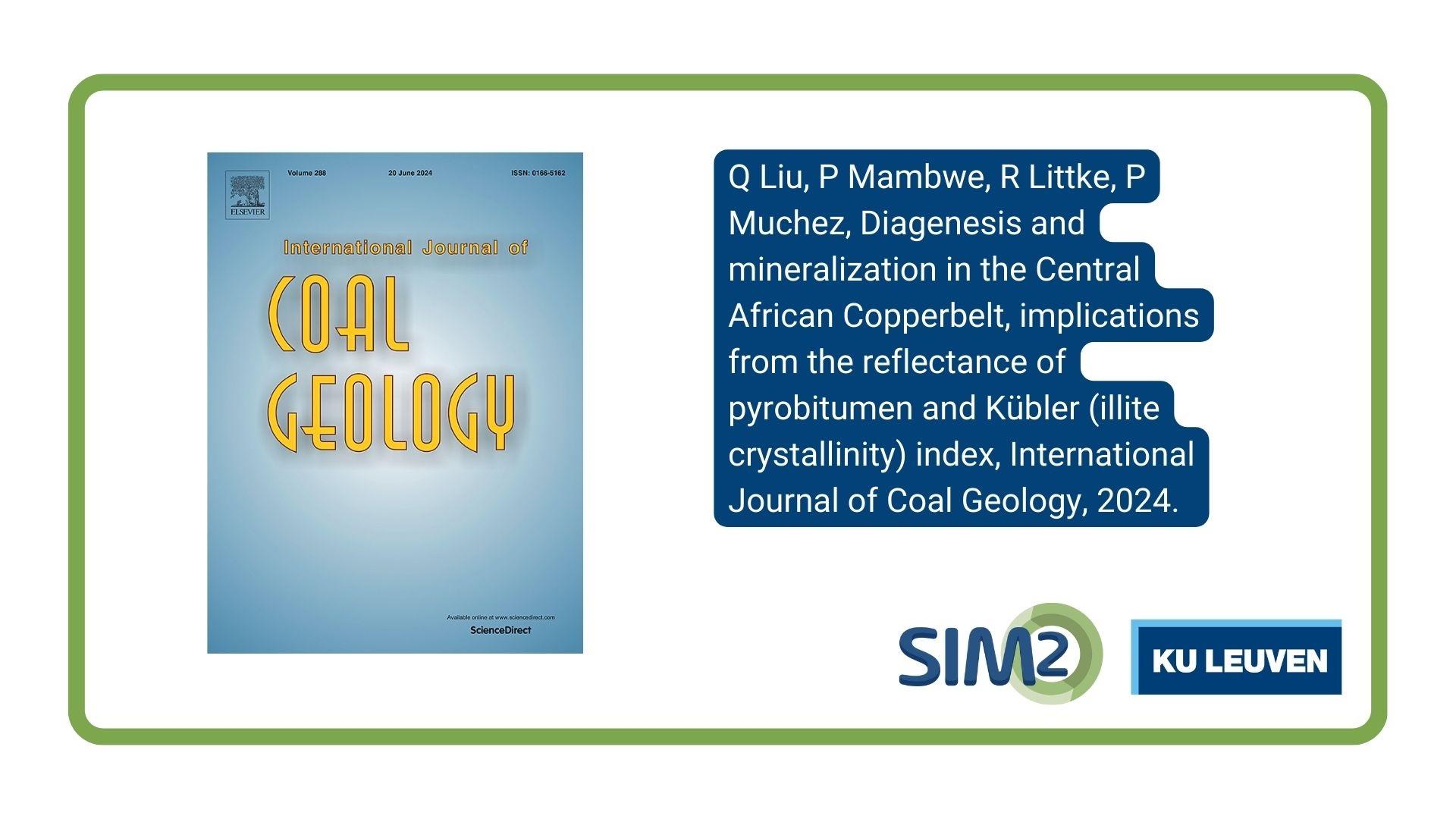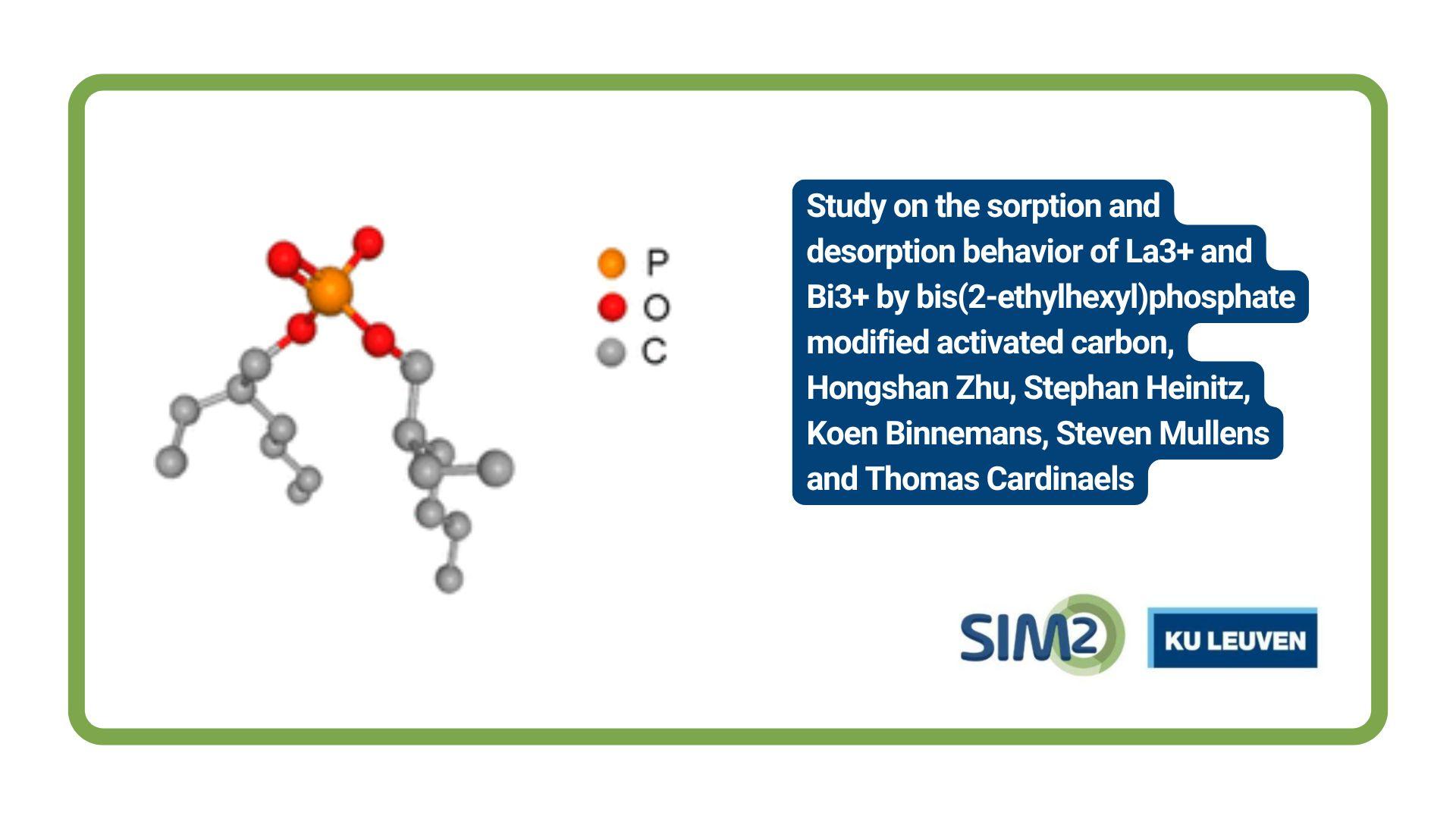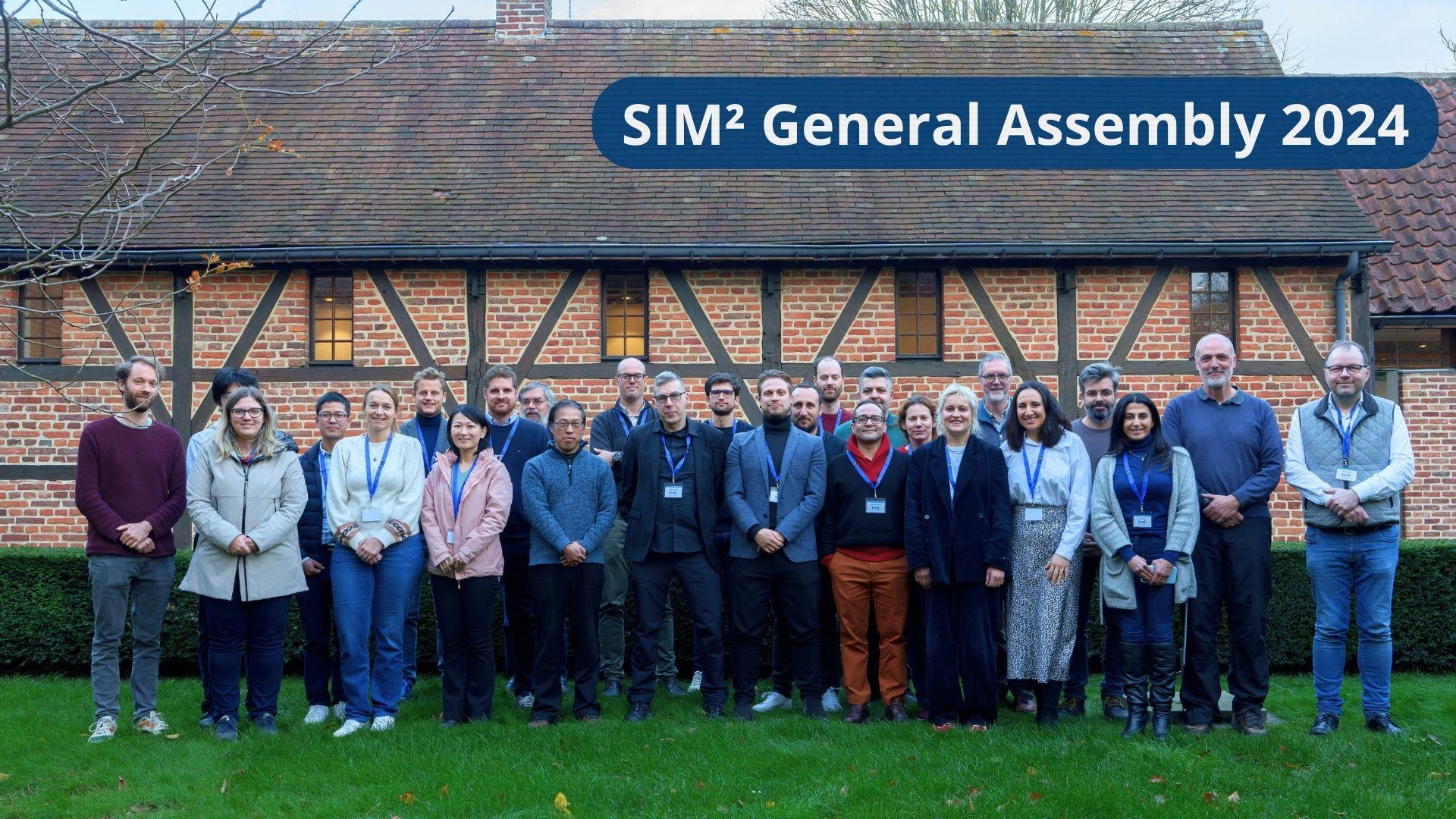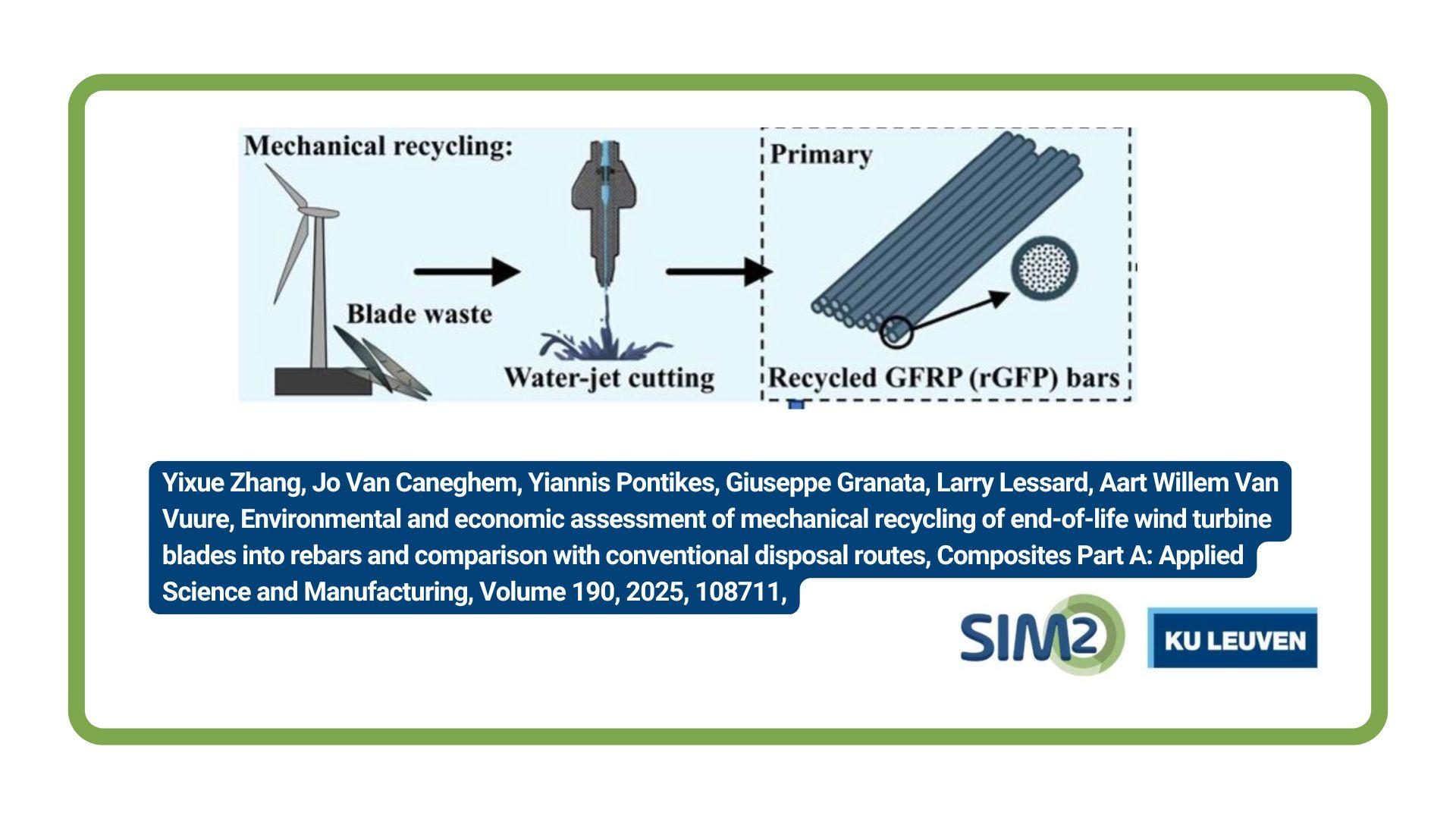Qiuping Liu, from the KU Leuven, Department of Earth and Environmental Sciences, together with other KU Leauven collegues and Ralf Littke from RWTH Aachen, Institute of Organic Biogeochemistry in Geosystems, has published a new article with the title RWTH Aachen, Institute of Organic Biogeochemistry in Geosystems. The article is published in the June issue of the International Journal of Coal Geology.
The Central African Copperbelt stands out as one of the world's largest sediment-hosted Cu Co provinces, contributing to over 60% of global Co production. A comprehensive basin analysis approach is imperative for unraveling the ore-forming processes, encompassing an understanding of the diagenesis or metamorphism that the mineralized rocks underwent. In this study, two types of pyrobitumen (burial related and burial plus hydrothermal related) reflectance values have been measured, which record maximum temperatures during deep burial and hydrothermal imprint. The calculated temperatures provide important information about the maximum burial and hydrothermal fluid temperatures in distinct regions of the Copperbelt. The average burial related pyrobitumen reflectance for Nkana, the southeastern part of the Copperbelt, ranges between 3.43 and 3.75% BRr, indicating a maximum burial temperature of about 240 °C. Moving towards the central part of the Copperbelt at Luiswishi, the average pyrobitumen reflectance varies between 2.65 and 2.87% BRr, with calculated maximum burial temperatures reaching about 220 °C. In the northwestern part (Tenke Fungurume mining district, TFMD), the maximum burial temperatures decrease to approximately 200 °C, based on the calculation of pyrobitumen reflectance at 2.10% BRr. This decreasing temperature trend from southeast to northwest corresponds to the observed decrease in metamorphic grade across the Copperbelt, ranging from amphibolite and upper greenschist facies in the Zambian part to prehnite-pumpellyite facies in the Congolese Copperbelt. The temperatures calculated during maximum burial, especially at the Nkana ore deposit, are lower than those previously proposed based on the mineralogy of the rocks, i.e. upper greenschist facies. However, the latter does correspond to the temperatures reached by the mineralizing fluids in this area and thus rather reflects the alteration assemblage and temperature. The average burial plus hydrothermal related pyrobitumen reflectance measured at TFMD ranges between 3.06 and 5.36% BRr, indicating calculated average temperatures of 300–350 °C. These temperatures align with those recorded for the late diagenetic to syn-orogenic mineralization by fluid inclusion microthermometry (180–340 °C) at TFMD. The data suggests a pervasive migration of hydrothermal fluid through the rocks, contributing to the observed pyrobitumen reflectance. The illite crystallinity of the examined samples is notably high. At Nkana, the KI values range between 0.10 Δ°2θ and 0.22 Δ°2θ, for Luiswishi between 0.12 Δ°2θ and 0.24 Δ°2θ, for Kamoto between 0.17 Δ°2θ and 0.23 Δ°2θ, for TFMD between 0.17 Δ°2θ and 0.25 Δ°2θ, which indicates all these samples were placed in epizone, with only a few in anchizone. This high value could be attributed to two potential factors: the admixing of detrital muscovite to the sediments or the influx of potassium due to the persuasive alteration throughout the Copperbelt, but the latter one is less likely since the selected samples show no evidence of alteration.
Co provinces, contributing to over 60% of global Co production. A comprehensive basin analysis approach is imperative for unraveling the ore-forming processes, encompassing an understanding of the diagenesis or metamorphism that the mineralized rocks underwent. In this study, two types of pyrobitumen (burial related and burial plus hydrothermal related) reflectance values have been measured, which record maximum temperatures during deep burial and hydrothermal imprint. The calculated temperatures provide important information about the maximum burial and hydrothermal fluid temperatures in distinct regions of the Copperbelt. The average burial related pyrobitumen reflectance for Nkana, the southeastern part of the Copperbelt, ranges between 3.43 and 3.75% BRr, indicating a maximum burial temperature of about 240 °C. Moving towards the central part of the Copperbelt at Luiswishi, the average pyrobitumen reflectance varies between 2.65 and 2.87% BRr, with calculated maximum burial temperatures reaching about 220 °C. In the northwestern part (Tenke Fungurume mining district, TFMD), the maximum burial temperatures decrease to approximately 200 °C, based on the calculation of pyrobitumen reflectance at 2.10% BRr. This decreasing temperature trend from southeast to northwest corresponds to the observed decrease in metamorphic grade across the Copperbelt, ranging from amphibolite and upper greenschist facies in the Zambian part to prehnite-pumpellyite facies in the Congolese Copperbelt. The temperatures calculated during maximum burial, especially at the Nkana ore deposit, are lower than those previously proposed based on the mineralogy of the rocks, i.e. upper greenschist facies. However, the latter does correspond to the temperatures reached by the mineralizing fluids in this area and thus rather reflects the alteration assemblage and temperature. The average burial plus hydrothermal related pyrobitumen reflectance measured at TFMD ranges between 3.06 and 5.36% BRr, indicating calculated average temperatures of 300–350 °C. These temperatures align with those recorded for the late diagenetic to syn-orogenic mineralization by fluid inclusion microthermometry (180–340 °C) at TFMD. The data suggests a pervasive migration of hydrothermal fluid through the rocks, contributing to the observed pyrobitumen reflectance. The illite crystallinity of the examined samples is notably high. At Nkana, the KI values range between 0.10 Δ°2θ and 0.22 Δ°2θ, for Luiswishi between 0.12 Δ°2θ and 0.24 Δ°2θ, for Kamoto between 0.17 Δ°2θ and 0.23 Δ°2θ, for TFMD between 0.17 Δ°2θ and 0.25 Δ°2θ, which indicates all these samples were placed in epizone, with only a few in anchizone. This high value could be attributed to two potential factors: the admixing of detrital muscovite to the sediments or the influx of potassium due to the persuasive alteration throughout the Copperbelt, but the latter one is less likely since the selected samples show no evidence of alteration.
Reference
Qiuping Liu, Pascal Mambwe, Ralf Littke, Philippe Muchez, Diagenesis and mineralization in the Central African Copperbelt, implications from the reflectance of pyrobitumen and Kübler (illite crystallinity) index, International Journal of Coal Geology, 2024, 104534, ISSN 0166-5162, https://doi.org/10.1016/j.coal.2024.104534.





